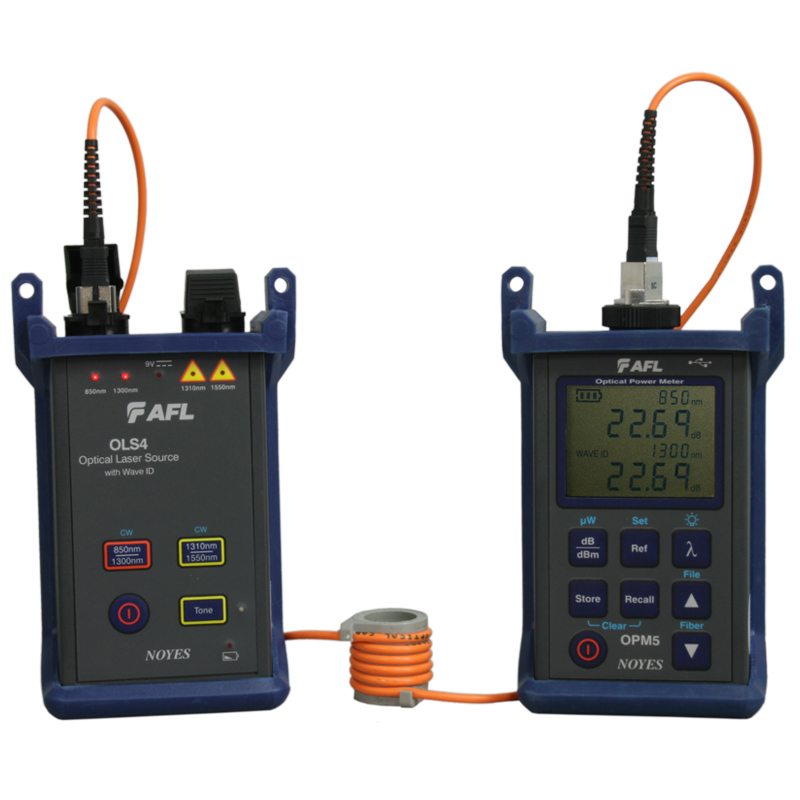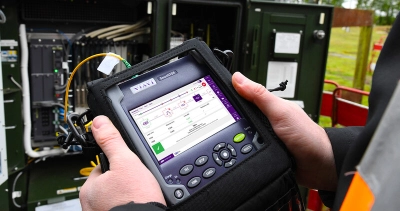Innovative robotic vision solutions optimize automation and precision.
Discover the Value of Optical Fibre Screening in Modern Telecommunications
In the realm of modern telecoms, the importance of optical fibre screening can not be overemphasized, as it works as the backbone for ensuring network reliability and performance. By implementing normal screening protocols, operators can preemptively determine prospective problems such as signal deterioration, hence protecting against interruptions that might prove pricey. Advanced methods like Optical Time-Domain Reflectometry play an essential role in this process, yet several might forget the more comprehensive ramifications of these practices. What are the particular advantages that normal testing deals, and exactly how might it form the future landscape of telecoms?

Recognizing Optical Fibre Screening
Optical fiber testing is an important procedure in telecoms that ensures the integrity and performance of fiber optic networks. This screening includes a variety of treatments created to review the physical and useful features of optical fibres - optical fibre diameter analyser. Trick parameters examined consist of optical power loss, data transfer capability, and fault location, which are necessary for maintaining high-grade interaction links
The testing process generally entails using specialized tools such as Optical Time-Domain Reflectometers (OTDR) and Optical Power Meters. OTDRs are employed to determine and characterize mistakes, splices, and adapters within the fiber, while power meters measure the transmitted light signal toughness to determine effectiveness.
Moreover, testing is conducted at numerous stages, including during installation, upkeep, and troubleshooting, to make sure that the network meets market criteria and functional needs. Conformity with criteria set by companies like the International Telecommunication Union (ITU) and the Telecommunications Sector Association (TIA) is paramount.
Advantages of Normal Evaluating
Normal testing of optical fibres yields various benefits that dramatically improve network dependability and performance. One of the key advantages is the early discovery of prospective concerns, such as breaks or deterioration in the fibre, which can result in expensive downtime if left unaddressed (optical fibre diameter analyser). By identifying these troubles proactively, telecommunications carriers can reduce solution disruptions and guarantee regular connectivity for their clients
In addition, regular testing assists to preserve the stability of signal top quality. As optical fibers age, their performance can be affected by elements such as ecological problems and physical tension. Routine evaluations enable the tracking of signal loss and general transmission efficiency, making sure that the network runs at ideal levels.
Another significant benefit is compliance with industry standards. Routine testing supports adherence to regulatory needs, consequently alleviating legal and financial threats associated with non-compliance. It boosts the general life expectancy of the fibre framework by helping with prompt maintenance and fixings.

Common Evaluating Approaches
Evaluating optical fibres employs various techniques to guarantee the stability and performance of telecommunications networks. Among the most common techniques is Optical Time Domain Reflectometry (OTDR), which analyzes the whole size of the fibre by sending out a pulse of light and measuring the reflections triggered by blemishes or breaks. This method provides detailed info about the location and intensity of mistakes.
Another prevalent technique is using Optical Power Meters, which gauge the amount of light transmitted through the fibre. This strategy assists determine the loss of signal toughness, guaranteeing that it fulfills market criteria. Additionally, Visual Fault Locators (VFL) are employed to identify breaks or extreme bends in the fibre by forecasting a noticeable laser light into the cord.
Insertion loss screening is also crucial, as it evaluates the loss of signal power arising from links and mates within the network. The use of Polarization Mode Diffusion (PMD) testing analyzes the influence of fiber qualities on signal integrity.
Each of these methods plays a crucial duty in keeping the efficiency and reliability of optical fibre networks, ultimately adding to smooth telecoms procedures.
Effect On Network Efficiency
The integrity and efficiency of optical fiber networks directly influence total network efficiency. In contemporary telecommunications, the efficiency of data transmission relies heavily on the quality of the optical fibres made use of. Any deterioration in the fiber's condition-- whether as a result of physical damage, contamination, or extreme flexing-- can cause boosted depletion and signal loss, substantially affecting information stability and rate.
Routine optical fibre testing is important to determine and correct potential issues prior to they materialize as network failures or downturns. Techniques such as Optical Time Domain Name Reflectometry (OTDR) and insertion loss screening make it possible for professionals to gauge the performance of fibre links precisely. These examinations not just assess the physical problem of the fibers but also ensure compliance with click here to find out more market criteria, thus safeguarding the network's reliability.
Furthermore, a well-maintained optical fiber network adds to reduced functional prices and enhanced customer complete satisfaction, as end-users experience less disruptions and higher information rates. Eventually, the emphasis on extensive optical fiber testing practices functions as a keystone for maintaining robust telecoms infrastructure, making certain that provider can satisfy the growing needs for bandwidth and connection in today's electronic age.
Future Fads in Testing
As we look in advance, improvements in innovation are positioned to improve optical fibre testing in telecoms. The increase of automation and expert system (AI) is anticipated to improve the performance and precision of testing procedures. Automated testing systems can conduct thorough assessments with marginal human treatment, considerably decreasing the capacity for errors and quickening time-to-deployment.
Furthermore, the combination of artificial intelligence algorithms will allow anticipating maintenance, enabling network carriers to foresee potential issues before they rise right into failures. This positive strategy not just improves network dependability however likewise enhances functional prices.
One more arising fad is the advancement of mobile screening devices that offer real-time analysis - optical fibre testing equipment. These gadgets will certainly empower technicians to carry out on-site diagnostics swiftly, promoting quicker resolutions and enhancing service quality
The development of 5G networks even more demands the advancement of testing methodologies. you can look here As bandwidth demands page increase, standard testing methods might no more are sufficient. Innovative options such as optical time-domain reflectometry (OTDR) and advanced spooky evaluation will certainly come to be crucial in ensuring the integrity and efficiency of high-speed links.

Final Thought
To conclude, optical fibre testing is necessary for guaranteeing the honesty and integrity of modern telecoms networks. Normal screening practices not just assist identify possible concerns such as signal loss and faults but likewise add to boosted network efficiency and consumer complete satisfaction. As the demand for seamless connection proceeds to expand, the fostering of sophisticated testing methods will certainly play a crucial function in preserving high-grade network criteria and supporting the developing landscape of telecommunications.